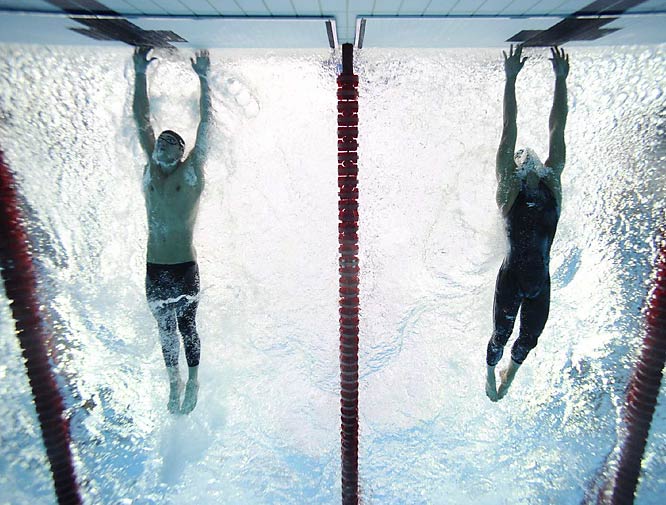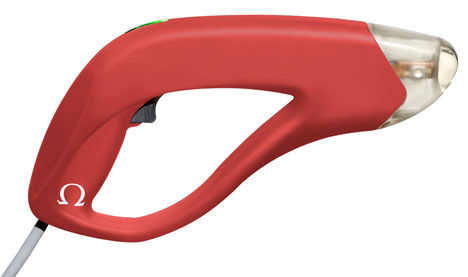Faster Than a Speeding Bullet

American swimmer Michael Phelps has 22 Olympic medals to his name — 18 gold, two silver, and two bronze. In the 2008 Beijing Olympics alone, he set a record by winning eight gold medals, including the gold in the men’s 100 meter butterfly over Milorad Cavic of Serbia, as seen above — kind of. Phelps, on the left, touched the wall 0.01 seconds before Cavic, and to the naked eye, discerning that fact is impossible. Even a frame-by-frame look into the finish yields little in the way of certainty. And these slight margins are not limited to swimming. For example, in the 2004 Athens Olympics, the top four finishers in the men’s 100 meters finished a total of 0.04 seconds apart, with times of 9.85, 9.86, 9.87, and 9.89 seconds, respectively.
With margins this thin, every factor may have an outcome on an Olympic race. Including the speed of sound.
At sea level, the speed of sound is about 340 meters per second. The men’s 100 meters is an 8-man race, with each competitor in a roughly 1.22 meter wide lane. The runner in Lane 1 is, approximately, eight and half meters from the runner in Lane 8. If the starting pistol is fired next to Lane 1, the runner in that lane will hear it about 0.025 seconds before the runner in Lane 8. The same goes for swimming, and even more so. An Olympic pool is ten lanes long, with each lane spanning 2.5 meters. Assuming each swimmer is roughly in the middle of his or her lane, the swimmer in the first lane is about 22.5 meters away from the swimmer in the final lane. The time it takes for the sound to travel from Lane 1 to Lane 10? Six hundredths of a second. And when the gap between gold and silver (or bronze and not medaling) is less than that, there’s a problem.
To solve for this, the Olympics (and other race organizers) have, for decades, wired the pistol to a microphone and relayed the sound to speakers situated behind each of those racing. The noise is relayed electronically and therefore moves much faster than the speed of sound, which should mitigate if not eliminate the problem. But going into the 2012 London Olympics, the organizers saw fit to improve upon the problem anyway. Why? In part, because some competitors were (perhaps subconsciously, to avoid false starts) unwilling to trust the electronically piped-in noise behind them and instead were “waiting” for the true sound to reach them.

The 2012 London Olympics fixed the problem. As reported by The Atlantic, the London Olympic Games Organizing Committee decided to use the starter originally tested in the 2010 Vancouver (Winter) Games — an all-electronic “gun” by Omega, seen above. Gear Patrol explains how it works: “When the starter’s finger pulls the trigger, the classic “bang” is played through speakers behind each runner’s starting block [and only there], a visual flash is emitted and a pulse is sent electronically to the timing system. No smoke and the only drama is at the finish line.”
And as an added bonus, you don’t need a permit to carry it around.
Bonus fact: Superman — the comic book hero, not Michael Phelps — is said to be “faster than a speeding bullet.” How fast is that? Starting pistols typically fire blanks or caps, so there’s no speeding bullet for Superman to outrace. For other handguns, it varies based on the gun as well as the bullet, but in general is in the range of 390 meters per second to about 460 m/s. In any case, they go — and therefore, Superman can go — faster than the speed of sound. So if Superman ever yells “watch out!,” he’s doing the person in danger a disservice, the sonic boom notwithstanding. He can get to the person faster than his voice can, assuming the sound of his voice isn’t also super.
From the Archives: Small, Hot, and Loud: A shrimp which breaks the sound barrier.
Related: You can’t buy guns which fire real ammo on Amazon, but for you can buy incredibly similar looking starting pistols.

Leave a comment